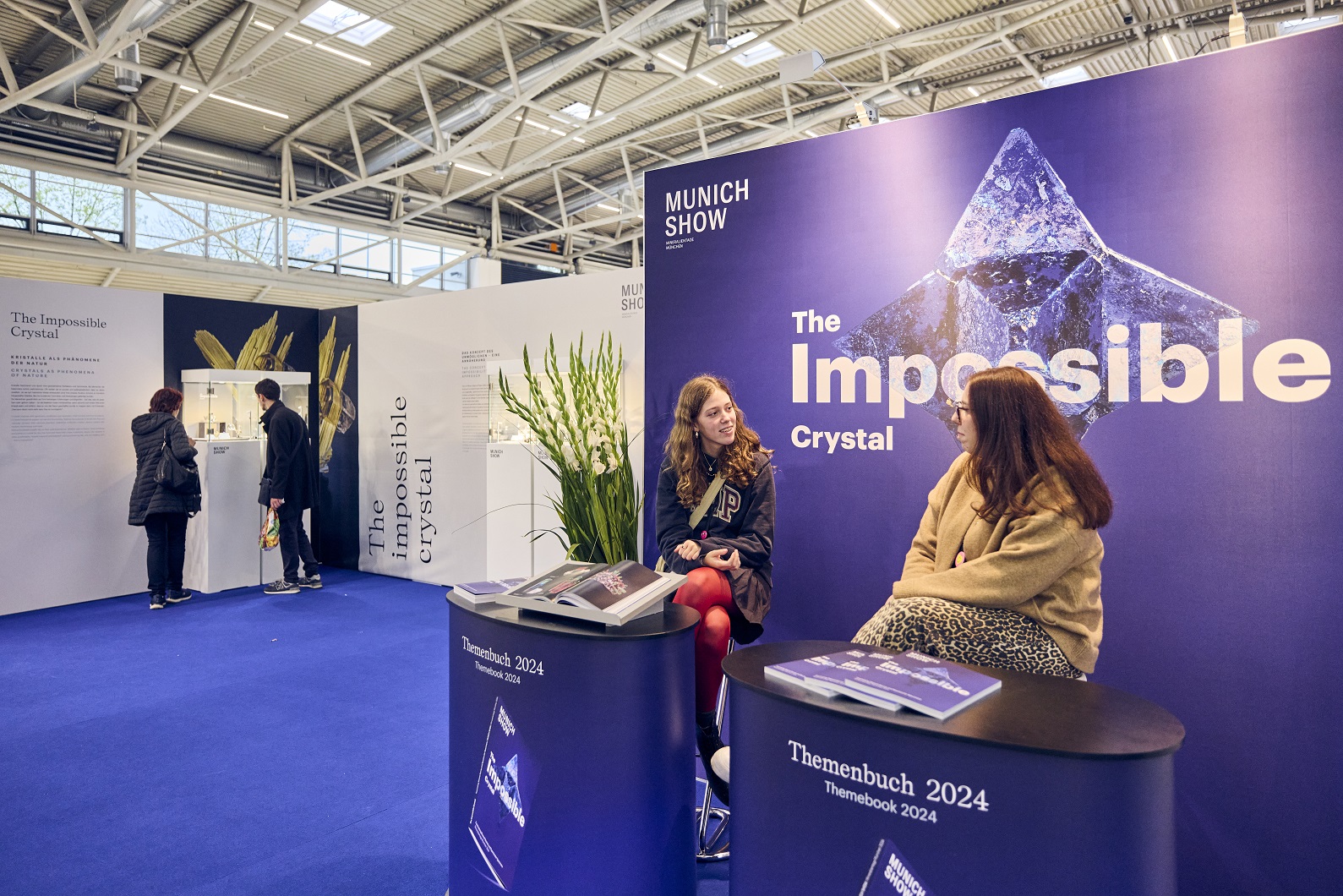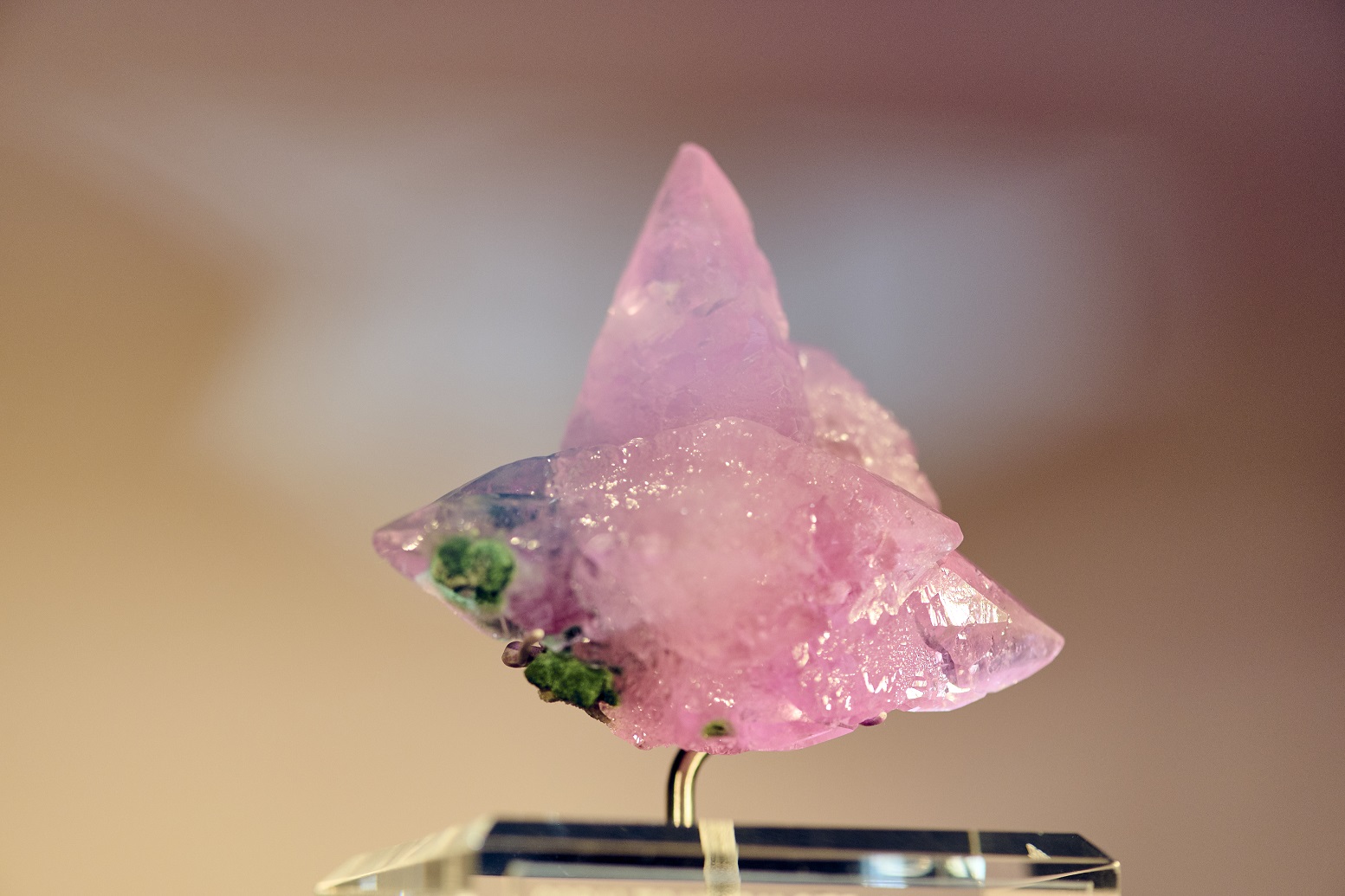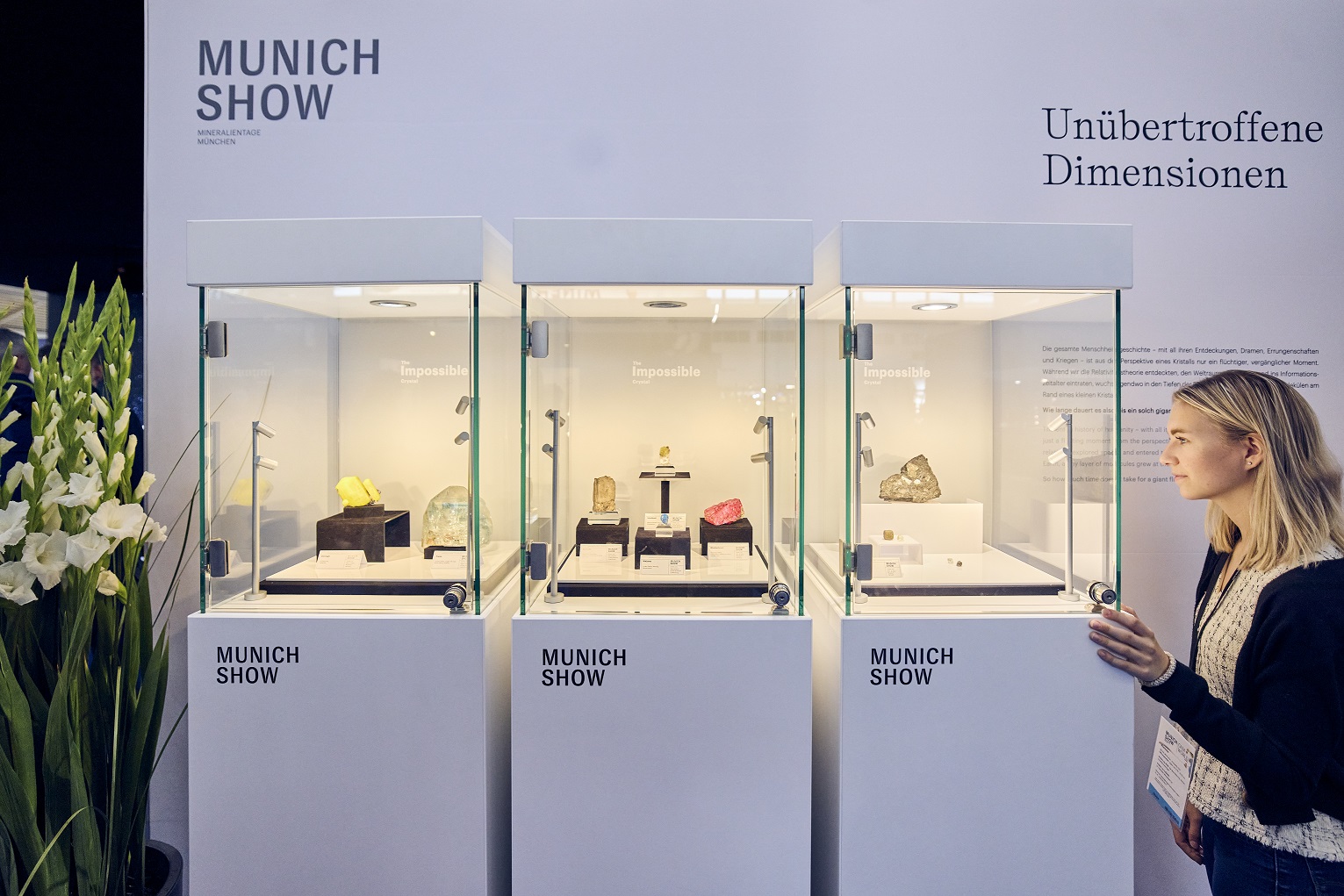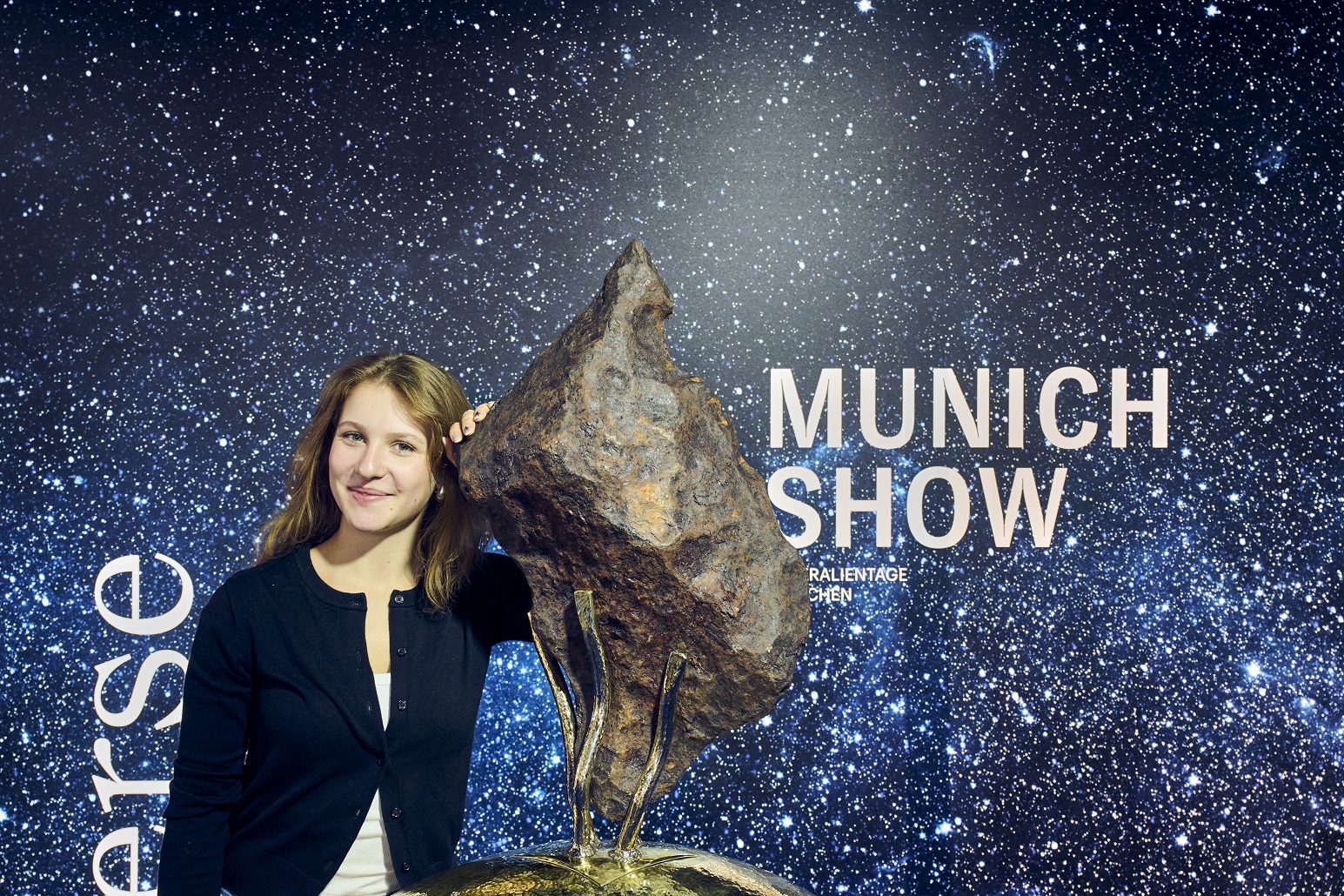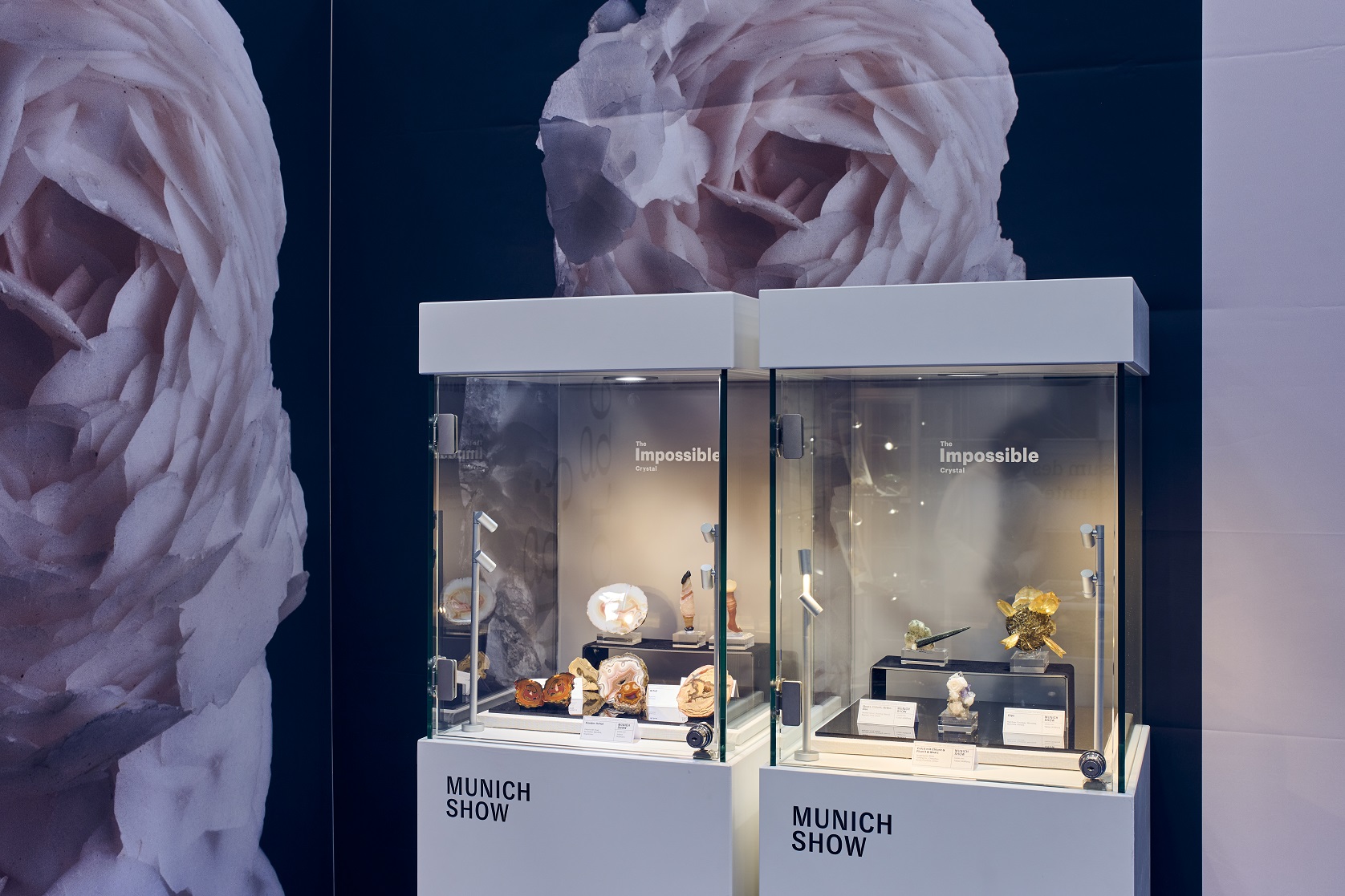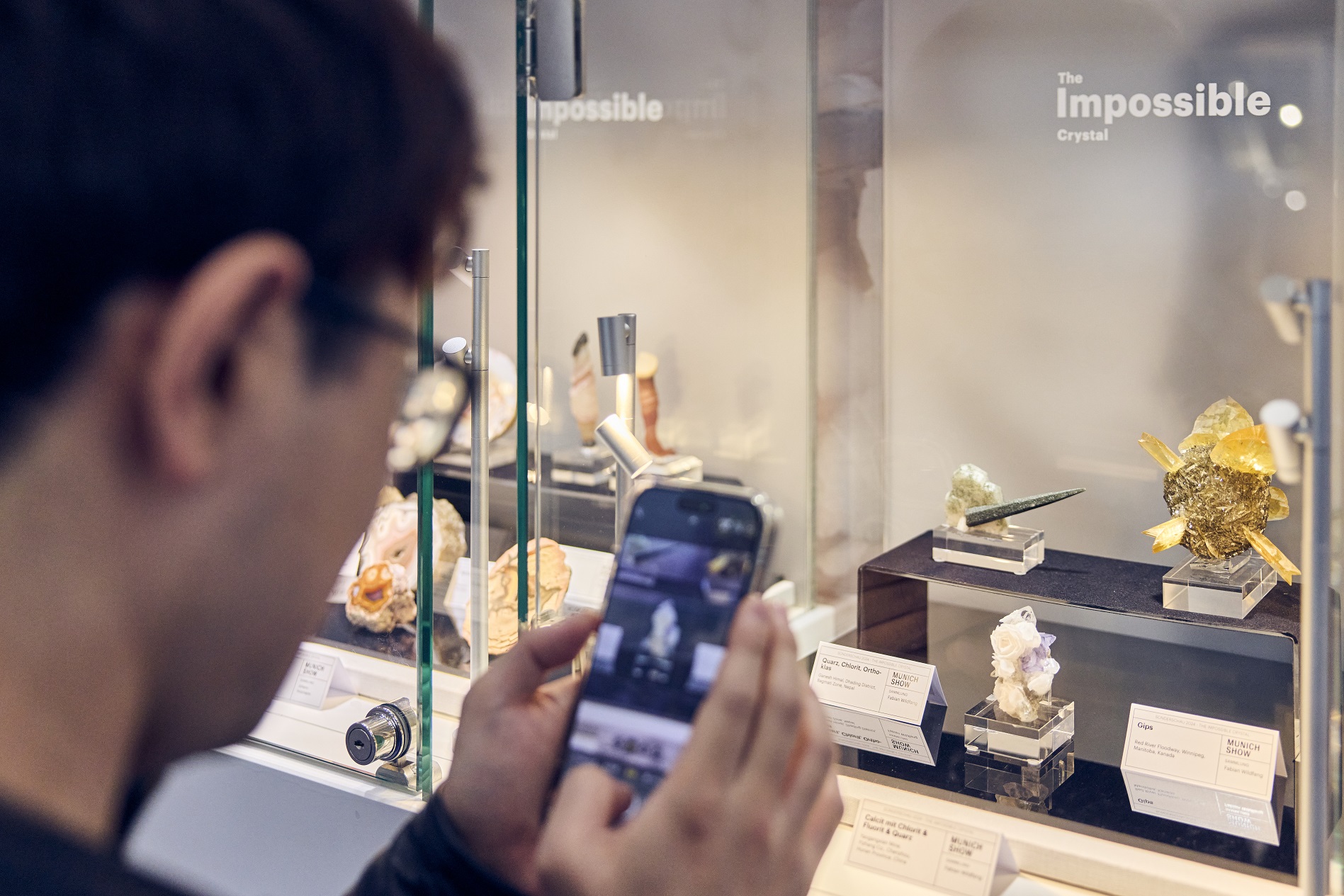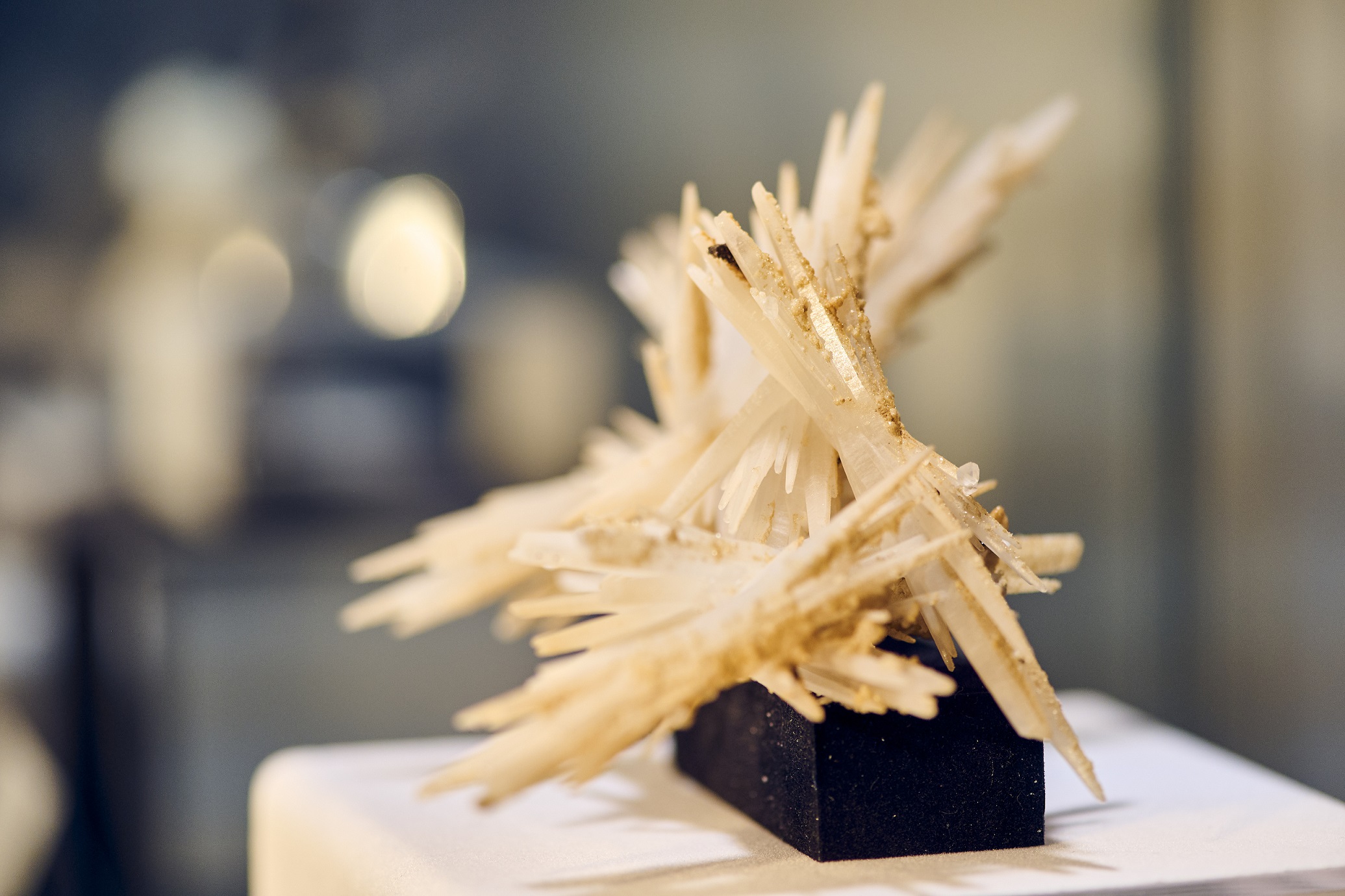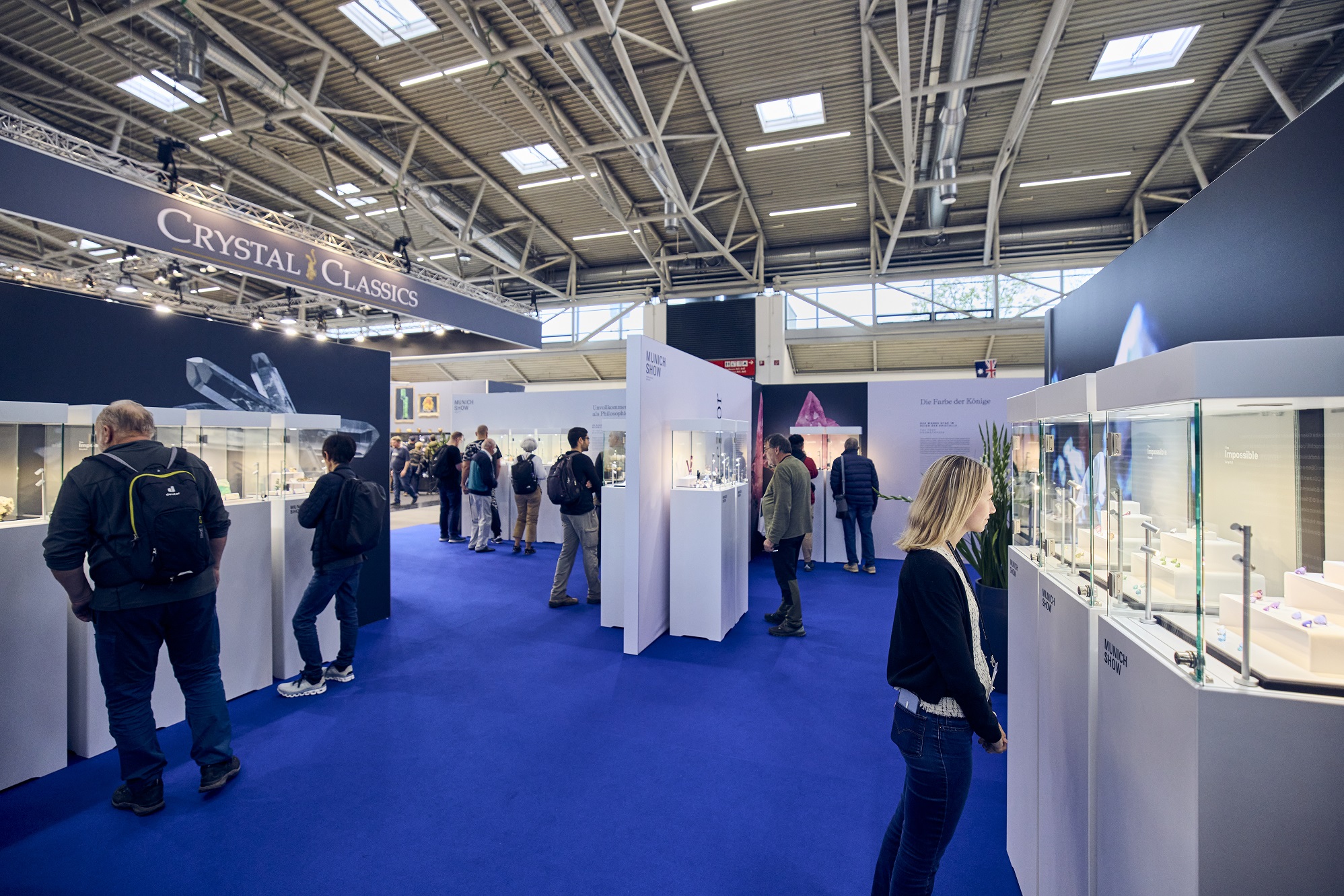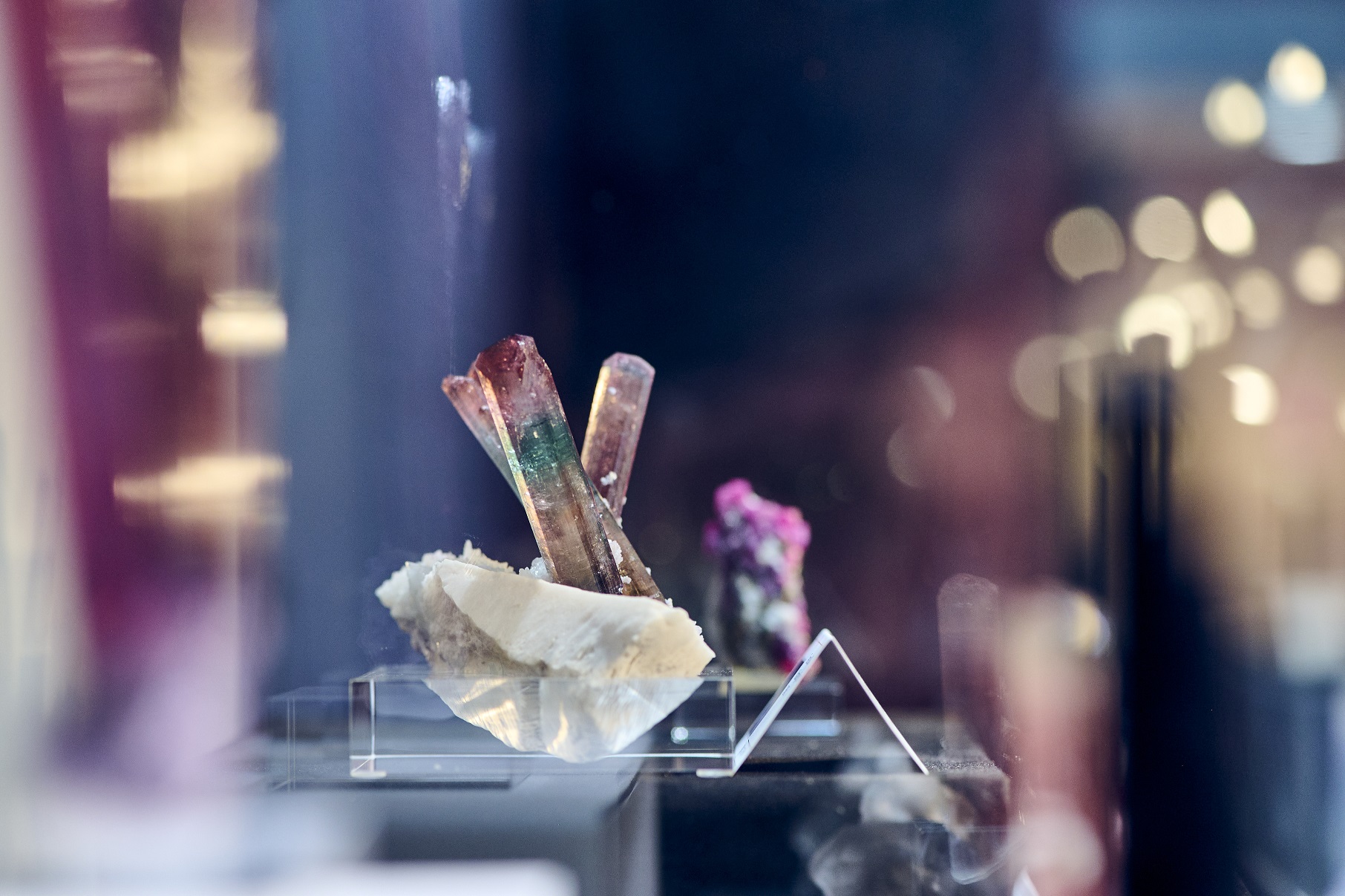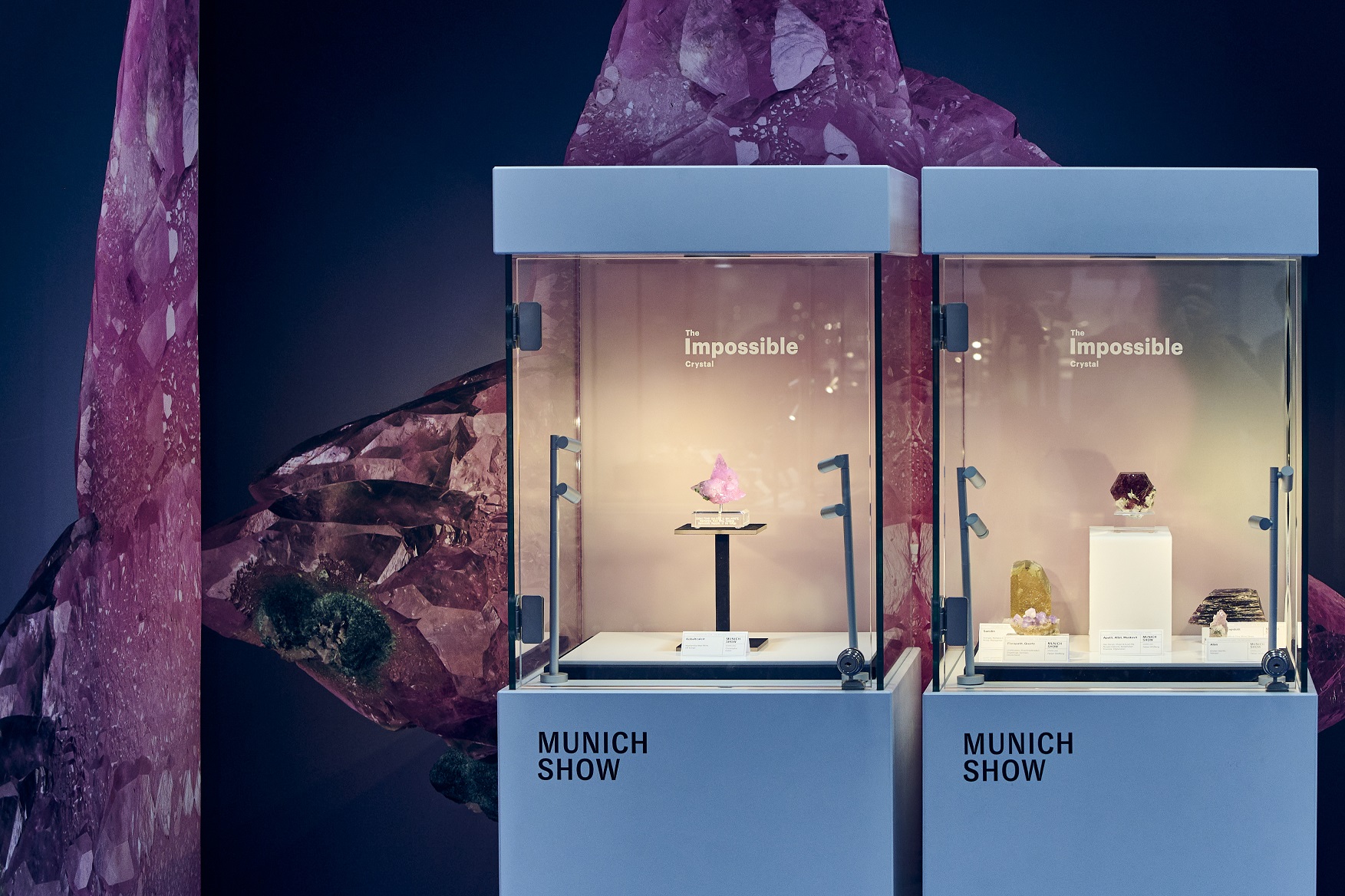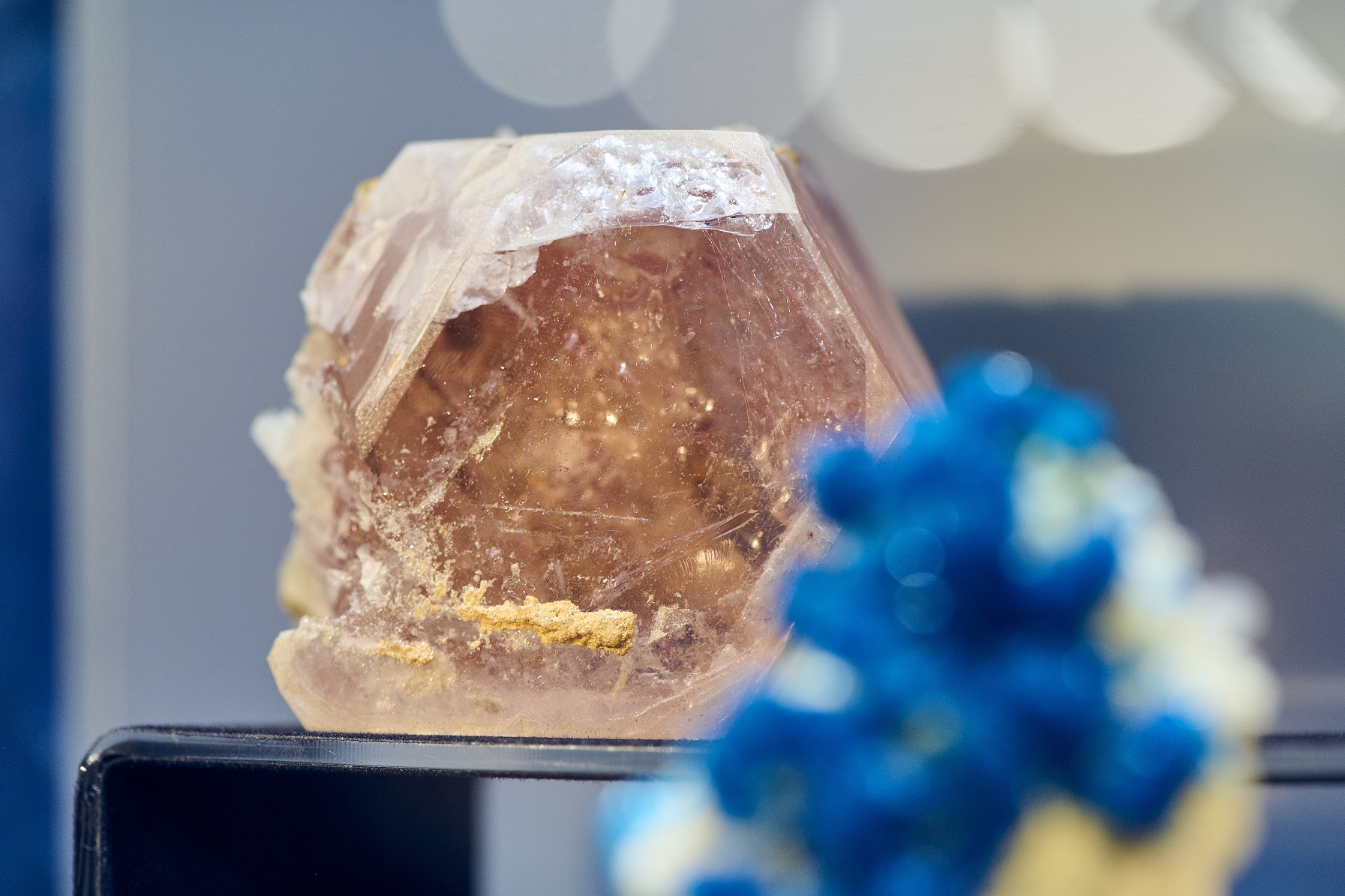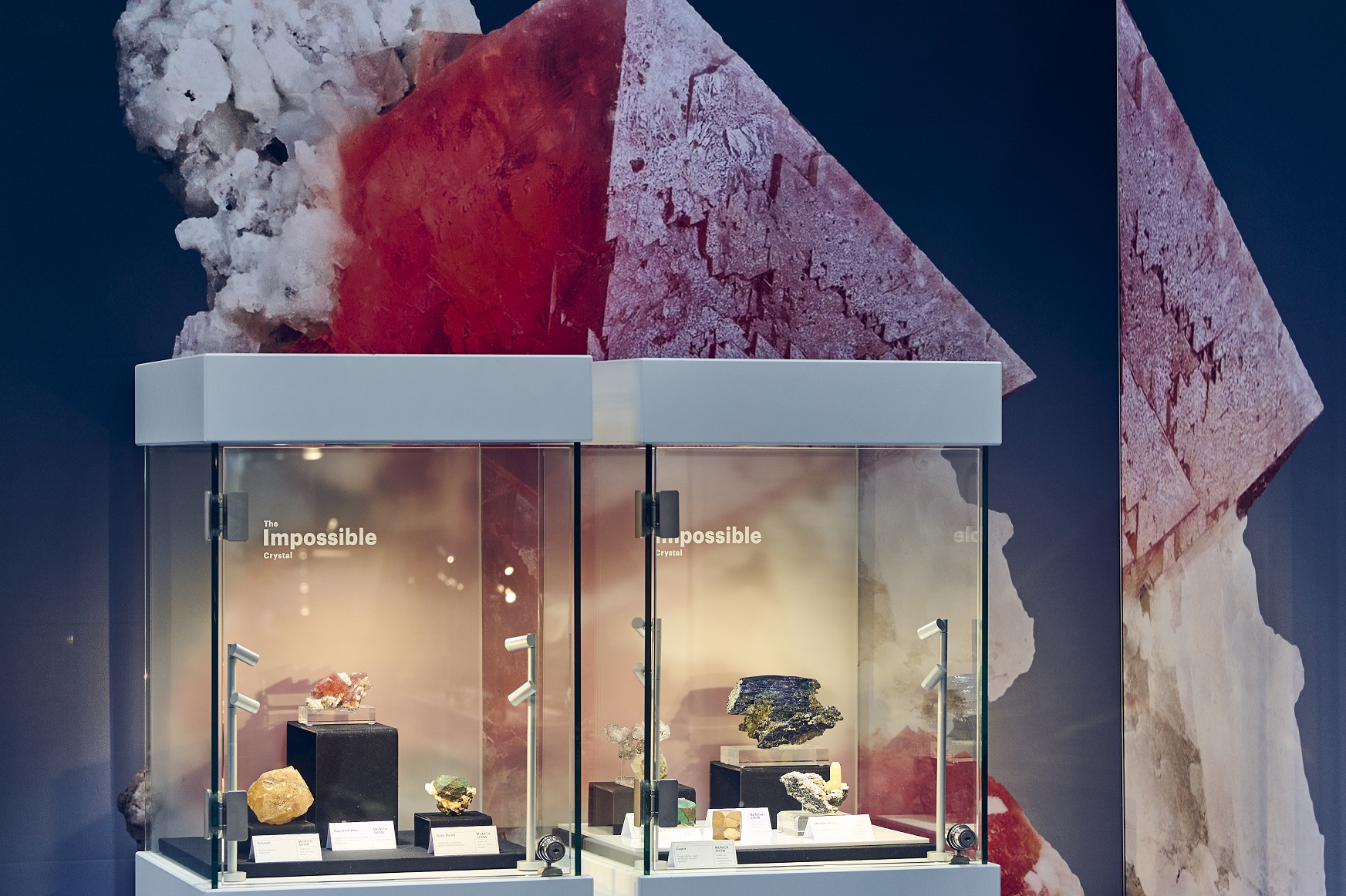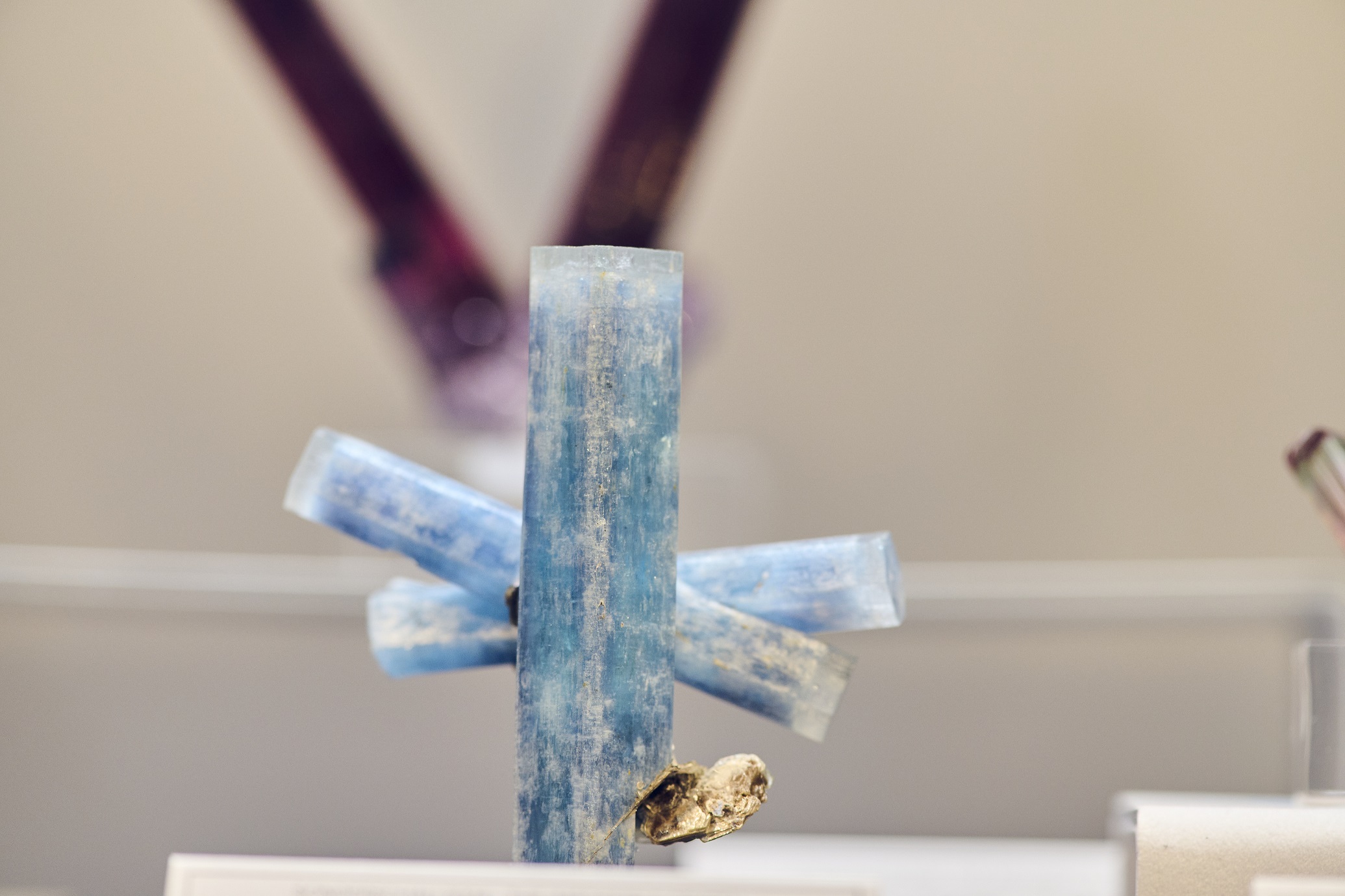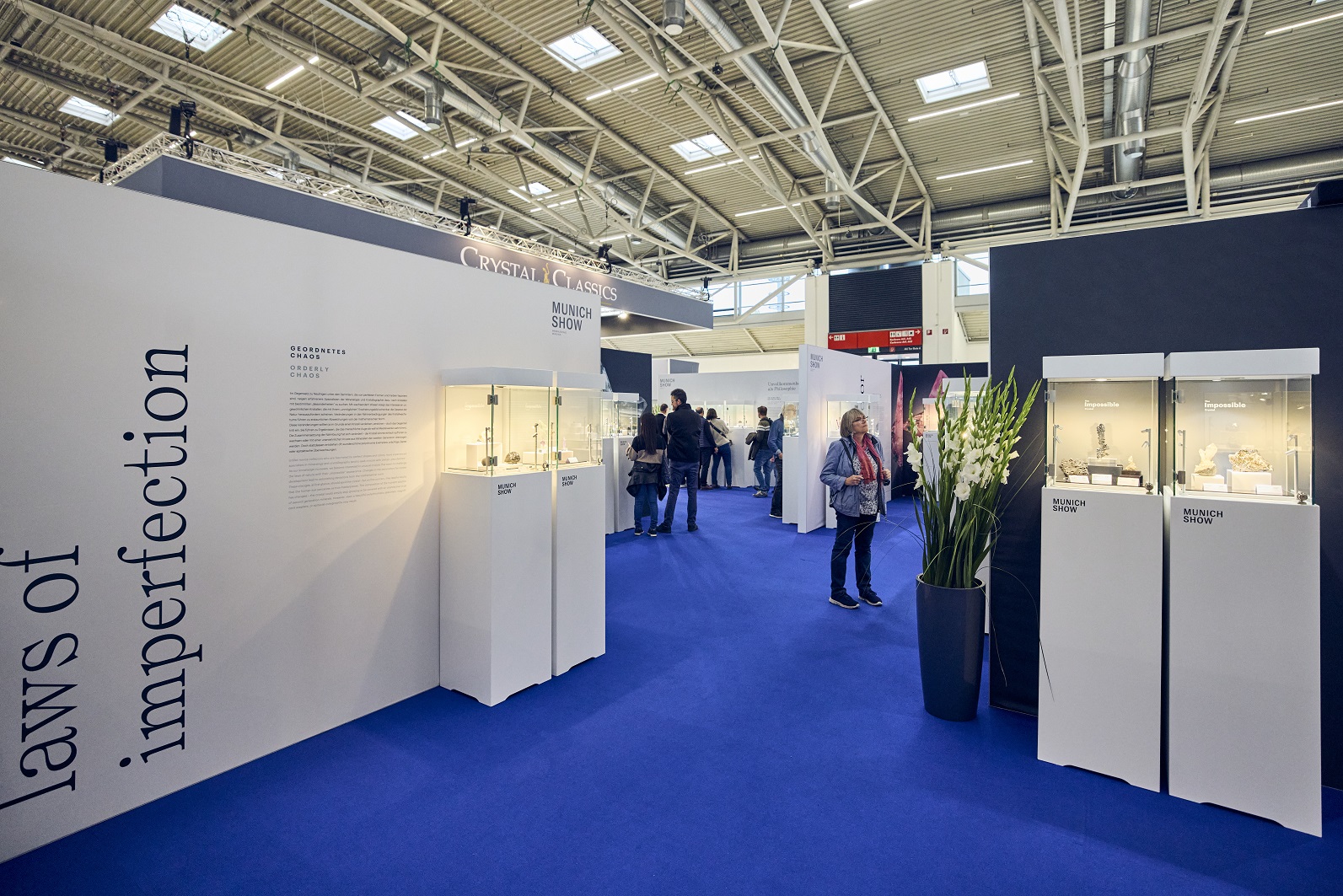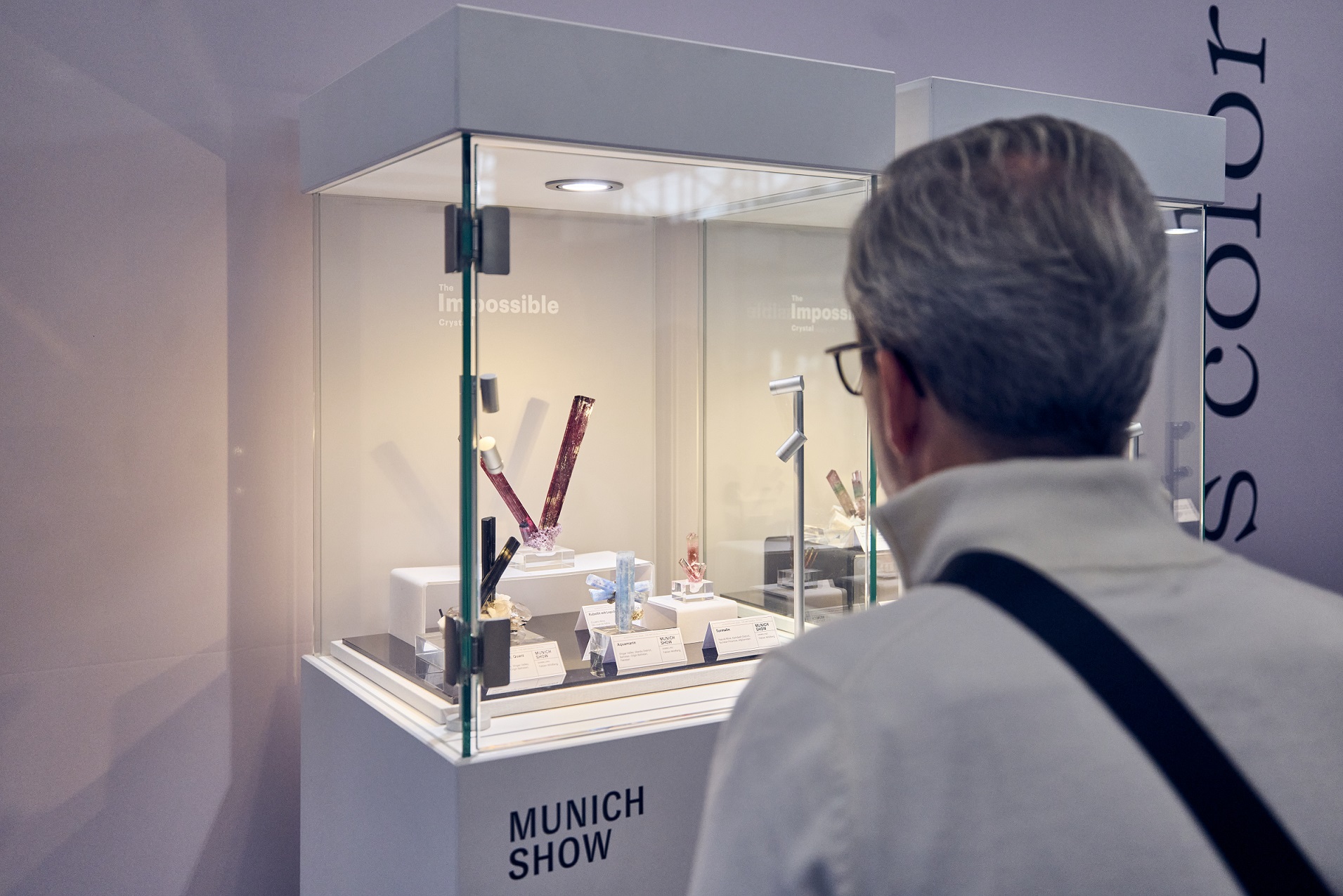
Special Show 2024: The Impossible Crystal
Sept 20, 2024
In its special show ‘The Impossible Crystal’, the Munich Show 2024 presents a breathtaking collection of extraordinary crystals that challenge both the limits of science and the imagination of visitors.
In the special show ‘The Impossible Crystal’, the formation of the seemingly surreal shapes of many minerals is vividly explained. Visitors can embark on a journey through the scientific principles of crystallography and learn how atoms and molecules form into the precise structures that we admire as crystals. However, the exhibition goes beyond the usual specimens and shows how nature produces crystals under special conditions that completely contradict conventional ideas. Astounding, surprising and inspiring aspects of the world of minerals are highlighted in twelve themed sections. A particular highlight are the so-called ‘impossible crystals’, whose shapes and colours have long puzzled even experts, such as the star-shaped cumengeite crystals. In addition to understanding our natural world, one of mankind's main endeavours is to imitate it artificially.
While gemstones were initially seen as symbols of power and wealth for thousands of years, the mastery of modern technologies for the artificial creation of crystals is a fundamental competitive advantage and the basis of the digital world. ‘The Impossible Crystal’ shows all these different facets and invites you to discover the secret of crystals and be enchanted by the incredible wonders of nature. The special show will take place in Hall A6.
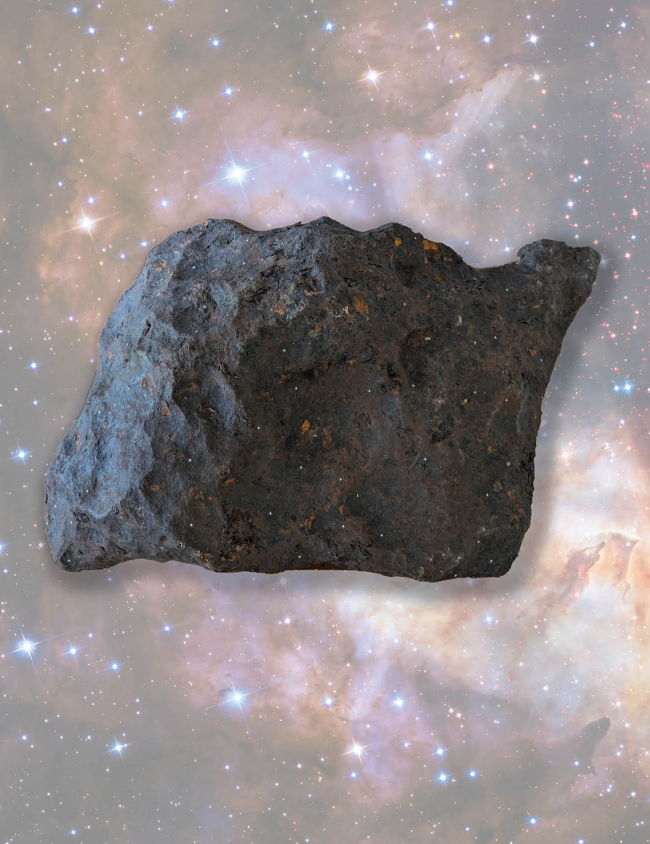
Germany's largest meteorite is presented to the public for the first time in Munich
Cosmic highlight at this year's Munich Show - Mineralientage München: The ISSIGAU meteorite, the largest meteorite ever found in Germany, will be presented to the public for the first time. The discovery of this extraordinary celestial body has already caused a sensation in meteorite research - now visitors to the special show ‘The Impossible Crystal’ can experience it in person at Europe's largest trade fair for minerals, fossils, gemstones and jewellery in Hall A6 from 24 to 27 October 2024.
The ISSIGAU meteorite was found in April 2020 during excavation work in the small village of Reitzenstein, a district of the municipality of Issigau in Upper Franconia. What makes it special: Weighing 136.4 kilograms, it is the heaviest and largest meteorite ever recovered in Germany. Dieter Heinlein, renowned meteorite expert from the German Aerospace Centre, who examined the find, explains: ‘The ISSIGAU is an iron meteorite of type IIIAB with a nickel content of 8.89 percent. Due to the strong weathering of the surface, we can conclude that it fell to Earth many thousands of years ago.’
Iron meteorites such as the ISSIGAU are particularly robust and allow visitors to the Munich Show to enjoy a rare and special experience: ‘Everyone is allowed to touch and even hug the meteorite at the trade fair,’ says Heinlein. ‘The motto is: ‘Touch the Universe!’
Cosmic origin and significance
The ISSIGAU meteorite comes from the asteroid belt between Mars and Jupiter. It is around 4.6 billion years old and therefore older than the Earth itself. The meteorite was probably knocked off during a collision of asteroids and then travelled through the solar system for millions of years until it hit the Earth at a speed of around 70,000 km/h. Heinlein explains: ‘When it entered the Earth's atmosphere, it lost mass, but its core remained intact and crashed to Earth as a meteorite.’
The ISSIGAU meteorite has not yet been fully researched.

